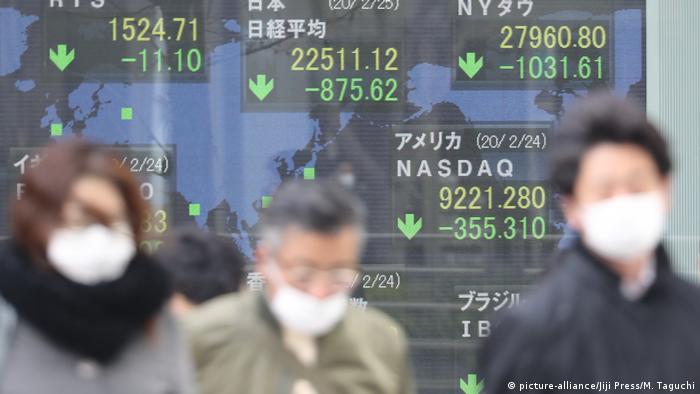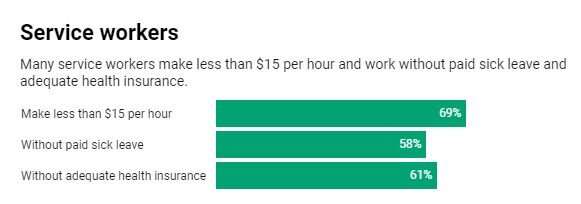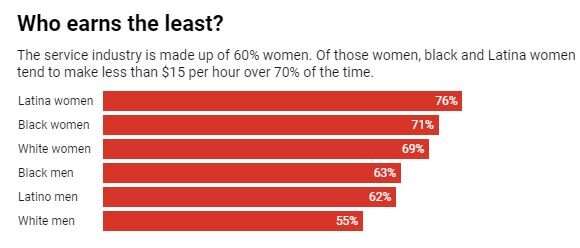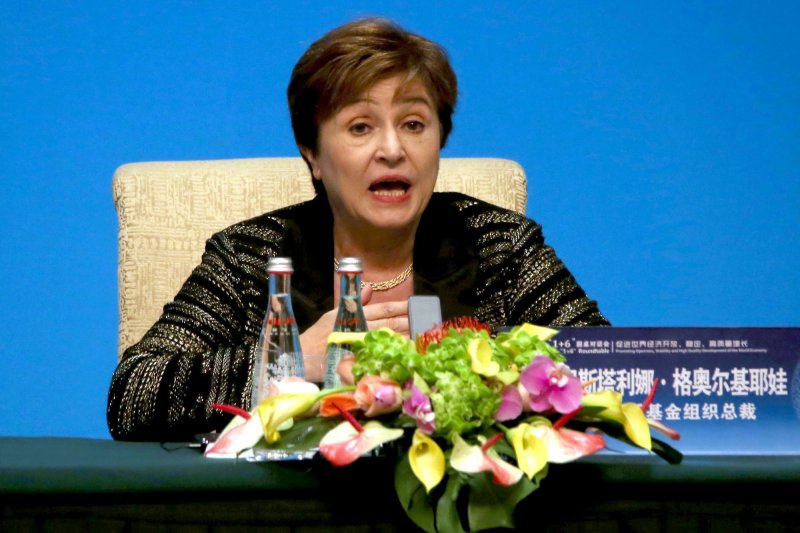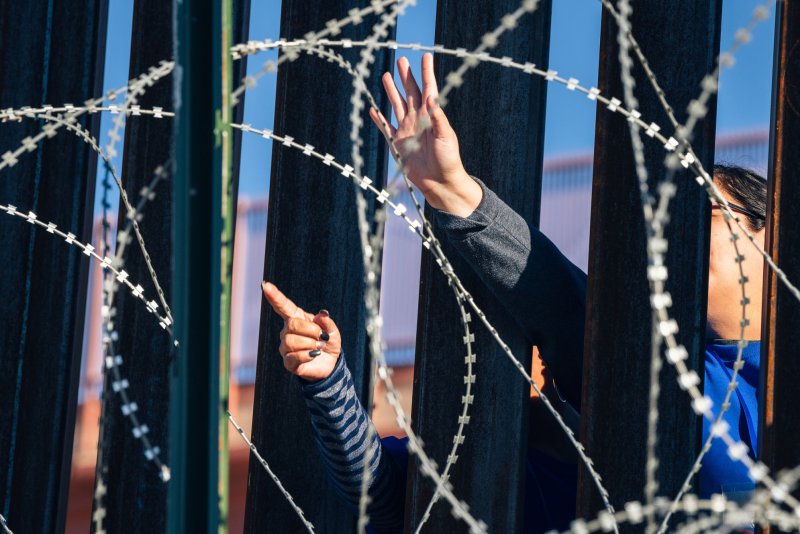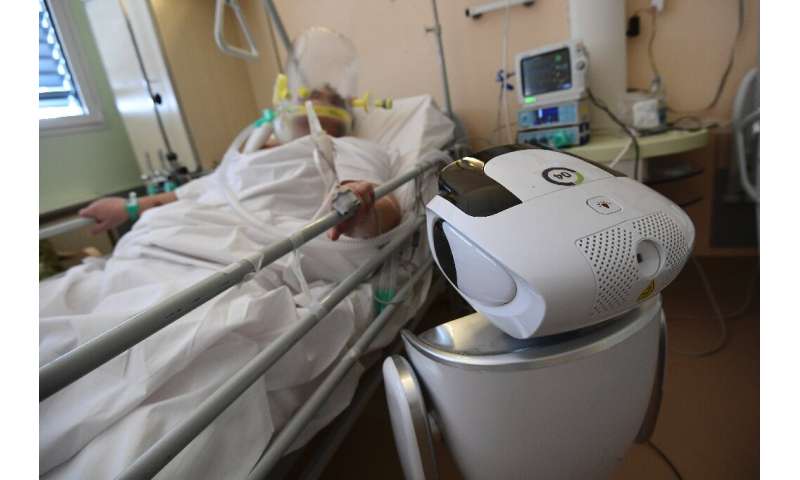VOICE
Is the Coronavirus Crash Worse Than the 2008 Financial Crisis?
The last global economic crisis was a financial heart attack. This one might be a full-body seizure.
BY ADAM TOOZE | MARCH 18, 2020, 12:23 PM

Pedestrians wearing face masks walk toward an electric
board showing stocks' share price on the Tokyo Stock
Exchange in Tokyo on March 13.
In May 2018, President Donald Trump restructured and downsized the pandemic preparedness unit. Of course, it seems ill-judged in retrospect. But he was not the first president to do so. The National Security Council’s (NSC) global health security unit was set up under Bill Clinton in 1998. Years later, first George W. Bush and then Barack Obama would shut it down, only to reestablish it shortly afterward. The fact is that bureaucracies have never known how to treat low-probability, high-stakes biomedical risks like pandemics. They sit awkwardly within the conventional silos of modern government and models of risk assessment.
If this is true for the NSC, it is even more so for those charged with economic policymaking. Among the tail risks widely discussed in economic policy circles, a deliberate shutdown of national economies on the grounds of a public health emergency has never been seriously considered. Of course, we’ve spoken of “contagion” in financial crises, but we’ve meant it metaphorically—not literally.
In 2008, we saw how the financial uncertainty spreading from the downturn in real estate—by way of subprime to funding markets and from there to the balance sheets of major banks—could threaten an economic heart attack. It was this massive financial shock, piled on top of the losses to households from a downturn in the real estate sector, that caused economic activity to contract. In the worst of times, over the winter of 2008-2009, more than 750,000 job losses were recorded every month—a total of 8.7 million over the course of the recession. Major industrial companies like GM and Chrysler stumbled toward bankruptcy. For the global economy, it unleashed the largest contraction in international trade ever seen. Thanks to massive intervention of both monetary and fiscal policy, it did not become a deep and prolonged recession. After a contraction of 4.2 percent in gross domestic product, a recovery began in the second half of 2009. Unemployment peaked at 10 percent in October 2009.
[Mapping the Coronavirus Outbreak: Get daily updates on the pandemic and learn how it’s affecting countries around the world.]
It is too early to confidently predict the course of the economic downturn facing us due to the coronavirus. But a recession is inevitable. The global manufacturing industry was already shaky in 2019. Now we are deliberately shutting down the world’s major economies for at least several months. Factories are closing, shops, gyms, bars, schools, colleges, and restaurants shuttering. Early indicators suggest job losses in the United States could top 1 million per month between now and June. That would be a sharper downturn than in 2008-2009. For sectors like the airline industry, the impact will be far worse. In the oil industry, the prospect of market contraction has unleashed a ruthless price war among OPEC, Russia, and shale producers. This will stress the heavily indebted energy sector. If price wars spread, we could face a ruinous cycle of debt-deflation that will jeopardize the world’s huge pile of corporate debt, which is twice as large as it was in 2008. International trade will sharply contract.
In the division of labor among different branches of economic policy, addressing the coronavirus recession is a classic task for targeted fiscal policy: tax cuts and government spending. What we need now is less stimulus than a comprehensive national safety net to prevent bankruptcies and long-term financial damage. Once we have survived the epidemic we will need investments in public health infrastructure big and small. Every country clearly needs hugely improved surveillance, modeling, and emergency facilities, as well as substantial reserve capacity. All of this, in due course, will offer excellent opportunities to productively spend money and create high-quality jobs. Unlike in 2008, there will even be sectors that naturally expand. Spending on health care, which already accounts for almost 18 percent of U.S. economic activity, will likely explode. With social distancing, we are, in effect, being mandated to resort to the impersonal delivery and conference systems of the Amazons and Zooms of this world. (If only we already had drones at the ready to deliver billions of care packages.)
But as in 2008, before we can tackle the recession, there is another threat to deal with: the risk of a financial heart attack. A recession is different from a panic. And a financial panic is what we began facing the week of March 8. It is that threat that continues to haunt the markets.
The immediate trigger was the breakdown of oil talks and Saudi Arabia’s announcement of a price war. On top of the worsening coronavirus news from Italy, this shocked markets and induced a contraction in lending and a flight to safety. The demand for cash was insatiable. The reality began to sink in that what started as an external biological shock to the economy might be mutating into an internal collapse in confidence and credit.
A sudden credit crunch exposes those that have too much debt and weak business models and have taken excessive risk. Their distress spreads to the rest by way of business closures, job losses, and fire sales of otherwise good assets. Matters are made even worse if the economic victims have financed their activities with borrowing, such that their losses eventually strike the balance sheets of creditors that were unwise enough to lend to them. Fear of these repercussions contracts credit across the board.
In 2008, the banks were at the center of the storm. Given the consolidation of their balance sheets, it is less likely that America’s big banks will run into difficulty this time. But Europe’s banks never truly recovered from the double shock of 2008 and the eurozone crisis. Italy’s public finances are in precarious balance. On Wall Street, fund managers of all kinds have been booking large losses and are facing huge demand for cash. A hard-pressed oil-producing country might be forced to offload assets from a sovereign wealth fund, thereby depressing prices for otherwise good assets and unleashing a chain reaction.
The most disconcerting sign has been the fact that as stock markets plunged, U.S. sovereign debt fell in price, too. That should not happen. Treasuries should function as safe havens. If their prices fall, it means that enough investors are desperate enough for cash to move even the biggest market.
Toward the end of the week, markets were hoping for goods news from the European Central Bank (ECB). Instead, bank president Christine Lagarde managed to make matters worse by seeming to signal that the ECB had no mandate to support Italy. She was forced to take the remarkable step of apologizing, not to Italy, but to her board. The Fed’s measures, announced at an extraordinary press conference Sunday, were blunt: It dropped interest rates to zero, embarking on a fourth round of quantitative easing. It is broadly the same toolkit it used in 2008.
These are not policies tailor-made for the pandemic. But that is not the point. The point is to not address the impact of the pandemic. As the Fed and ECB have both insisted, that is a task for fiscal policy. Faced with the coronavirus pandemic, the limited but essential role of the central banks is to prevent the credit system from becoming a risk in its own right.
There has not been as much international coordination among the central banks as there eventually was in fighting the 2008 global financial crisis. But explicit coordination may not be necessary. We have spent enough time digesting the experience of the global financial crisis. Everyone knows the playbook, and everyone knows that the Fed must lead. The global financial system is dollar-based. And that is why the most significant step toward cooperation this past weekend was the announcement concerning the standing liquidity swap lines among the major central banks: the U.S. Federal Reserve, the Bank of Japan, the Bank of England, the Bank of Canada, the ECB, and the Swiss National Bank.
The swap lines in their current iteration were first put in place at the end of 2007 to ensure that funding in U.S. dollars was available not only for banks and financial actors based in New York but to the entire global financial system. In 2013, these channels were made permanent among the major central banks. The move this past weekend lengthened the term of the swaps and reduced the interest margin the Fed charges.
We used to worry that Trump and the Republican economic nationalists in his administration would challenge this ultimate expression of global central bank cooperation. After all, the swap lines mean that the Fed provides dollars on demand to its foreign counterparts—not something one would expect the “Make America Great Again” crowd to approve of. But it turns out that when you face a pandemic and you’re arguing over whether it is safe to leave your home, no one cares about nationalist principles.
The Fed’s actions did not stop the selling on financial markets, and it remains to be seen whether the policies will have to be widened. As each new bottleneck is revealed in the credit system, expect more action. First, the Fed increased its support for the repurchase agreement market, where Treasurys and other bonds are lent out for cash. Now, it is supporting the commercial paper market, where big businesses borrow money for three months at a time from investors like money market mutual funds. But the far more basic limitation of central bank action to date concerns the wider world.
The recent swap line measures apply only to the innermost circle of advanced economies. Although it was widened during the global financial crisis, even then only 14 central banks were given access to the Fed’s drip feed of dollars. Amongst Emering Markets only South Korea, Brazil and Mexico were included. The rest were relegated to dependence on the International Monetary Fund. But since 2008, the boundary between the most sophisticated emerging market economies and their advanced economy counterparts has become increasingly blurry.
South Korea has so far weathered the storm in exemplary fashion. Its public health measures along with those of Taiwan appear to be the best in the world. But in a panic, money flows toward the center. So far, we have seen only the beginnings of a flow into U.S. dollar-denominated assets by investors. But several emerging markets are already coming under severe financial pressure. The outflow of foreign funds since the beginning of 2020 has been dramatic. In the past eight weeks since coronavirus fears began spreading, $55 billion has flowed out of emerging markets, a drain twice as large as that seen in 2008 or during the “taper tantrum” of 2013. This will exert severe pressure on countries like Mexico and Brazil, which have large populations, relatively weak public infrastructure, and fragile finances.
The real question concerns China. In 2008, China played a strong hand. It did not suffer a financial run. Its gigantic fiscal and monetary stimulus delivered a giant boost to both its national economy and those who export to it. No swap line was ever seriously contemplated between the Fed and the People’s Bank of China (PBC). Since then, the PBC has established its own swap network. But that supplies renminbi, not dollars. Faced with a crisis that has forced the shutdown of a large part of the Chinese economy and will likely induce a dramatic contraction in global trade, the question is how large the demand might be for dollar funding on the part of China’s globalized businesses. Since 2008, their activities abroad have expanded dramatically and, like other emerging market businesses, they borrow heavily in the American currency. China’s official reserve managers have a large stock of dollars. But like other great reserve stockpiles, they are held not in cash but in U.S. Treasurys.
The last thing the world needs right now, given the uncertainty in Treasury markets, is for Beijing to be forced to liquidate that stockpile. That could offset all of the Fed’s efforts to stabilize the U.S. government funding market. On the other hand, is it not easy to imagine the Fed taking Chinese currency as collateral for a large dollar swap. The Fed would not want to risk the ire of anti-China hawks in Congress.
Faced with a global health emergency and the common interest in maintaining economic stability, one can only hope that the technocratic imagination trumps the evident temptation on both sides to politicize the crisis.
Adam Tooze is a history professor and director of the European Institute at Columbia University. His latest book is Crashed: How a Decade of Financial Crises Changed the World, and he is currently working on a history of the climate crisis. Twitter: @adam_tooze




